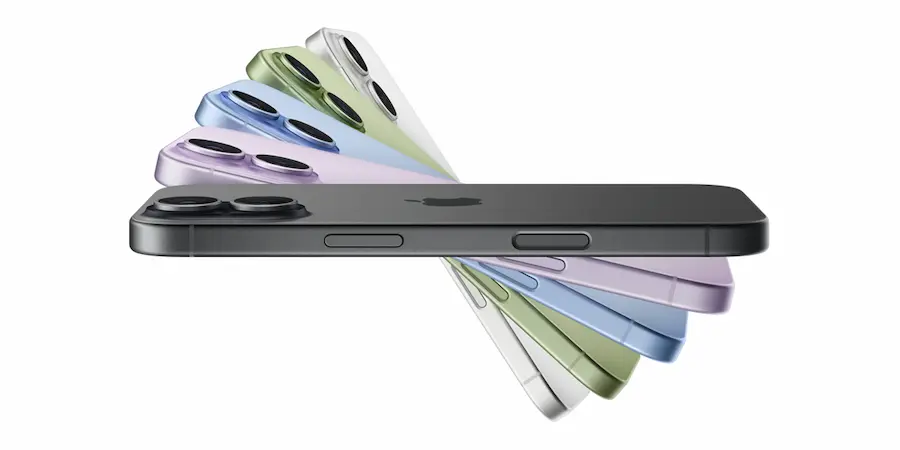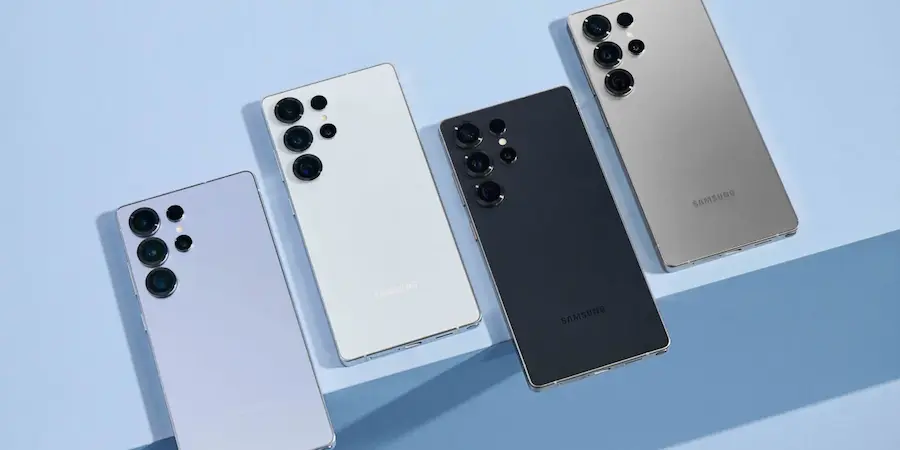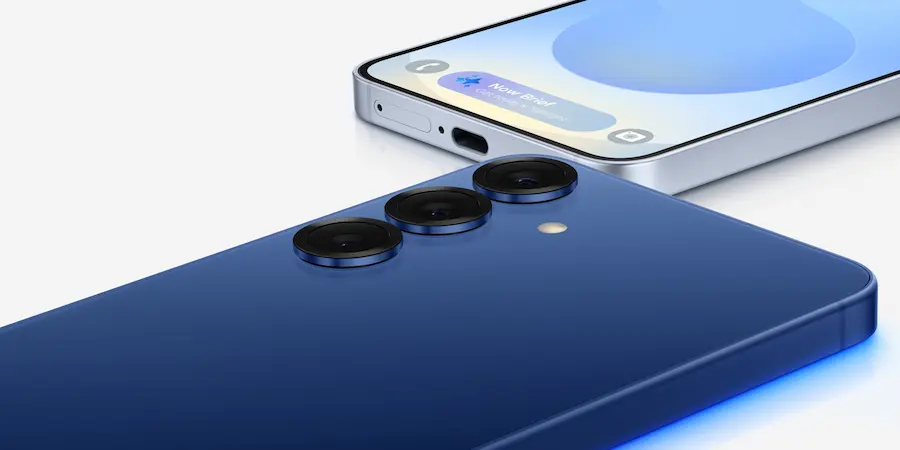Looking for an “affordable” flagship and torn between the iPhone 17 and the Galaxy S25? Don’t worry: we’ve analyzed point by point what these two models arriving in the second half of 2025 offer to dominate the €800/€900 range, and the truth is both come with strong arguments, from 120 Hz displays to more ambitious cameras and an increasingly marked focus on AI. The question isn’t whether they’re good, but which user profile fits each one better.
Design and display: extreme compactness vs. record brightness
The Galaxy S25 keeps the crown of the “compact king”: at 7.25 mm thick and 162 g, it’s one of the thinnest and lightest flagships of the year. It bets on an Armor Aluminum frame and Gorilla Glass Victus 2 protection on the front and back, plus its classic vertical triple-camera aesthetic. The iPhone 17, for its part, is slightly taller, thicker and heavier (177 g), with an aluminum frame, Ceramic Shield 2 on the front —Apple claims it’s up to three times more scratch-resistant than the previous generation— and a reinforced glass back. Both arrive with IP68 water and dust resistance.
In colors, Apple offers black, lavender, mist blue, sage and white; Samsung paints its range in Icy Blue, Mint, Navy, Silver Shadow, Pink Gold, Coral Red and Blue Black. But the real battle is the panel: the iPhone 17 finally debuts ProMotion 1–120 Hz on the base lineup, increasing to 6.3 inches and reaching 3000 nits peak brightness for outdoors, with 1600 nits in HDR. The Galaxy S25 mounts a 6.2-inch AMOLED also at 1–120 Hz and 2600 nits peak brightness, more than enough to see well under the sun, with symmetrical bezels in both cases.
On biometrics, Apple remains faithful to Face ID integrated into the Dynamic Island, while Samsung opts for an ultrasonic under-display fingerprint reader with facial unlock as a complement. Does the jump to 120 Hz feel noticeable? Like going from an HDD to an SSD: the smoothness is there, everything feels instantaneous and it’s hard to go back.

Performance and software: RAM, AI and years of support
The iPhone 17 debuts the A19 Bionic built on 3 nm (TSMC N3P), with efficiency and sustained performance improvements over the A18. It ships with 8 GB of RAM and, good news for non‑Pro iPhone users, doubles base storage to 256 GB without raising the price. The Galaxy S25 relies on the Snapdragon 8 Elite —also 3 nm— and flaunts 12 GB of RAM and UFS 4.0 storage up to 512 GB; it starts at 128 GB in the base version, but the combination of more memory and faster storage suits on-device AI functions very well.
On software, iOS 26 debuts with the Liquid Glass interface, Call Screening, Live Translate, improvements in Messages and Apple Intelligence, although Apple warns: several advanced AI features, including a more ambitious Siri 2.0, won’t arrive until 2026 or later. The Galaxy S25, with One UI 7 on Android 16, integrates Galaxy AI natively, with tools like Circle to Search, Live Translate, Note Assist or generative photo editing; the famous “circle to search” popularized on Google Pixel devices is part of the package from day one here.
On support, Samsung promises 7 years of updates, a long and clear horizon; Apple doesn’t give official figures, but its history runs at least around 5 years and often higher. For connectivity, both opt for USB-C, with the S25 offering USB 3.2 versus the iPhone 17’s USB-C 2.0 —a detail to consider if you frequently move large files.
Cameras and battery: real zoom or top selfies
Apple refines the iPhone 17’s system while keeping the 48 MP main sensor and introducing a sharper ultra wide for macro and detail. The big leap, however, is up front: a new 18 MP front camera with OIS, a square sensor that captures vertically and horizontally without rotating the phone, automatic framing for group selfies and 4K HDR video with stabilization and Dual Capture (simultaneous recording with front and rear cameras). If you make video calls or create content with the front camera, this is a before and after moment.
The Galaxy S25 goes for total versatility: 50 MP on the main, 12 MP on the ultra wide and, crucially, a 10 MP telephoto with 3x optical zoom. With no telephoto on the iPhone 17, Samsung takes the lead when you need to get closer without losing detail; if you like photographing concerts, architecture or wildlife, the optical zoom makes the difference. In short, Apple fine-tunes overall quality and selfies, Samsung adds the plus of real zoom.

On battery and charging, a plot twist: although Samsung mounts 4000 mAh, its wired charging is 25 W and wireless 15 W (with reverse wireless charging available). The iPhone 17, estimated around 3600 mAh with stacked battery for better density and lifespan, offers up to 30 hours of video playback, and raises the stakes with 40 W wired and 25 W wireless with MagSafe and Qi2.2 support. There’s also a practical nuance: the S25’s port is USB 3.2, faster for transfers; the iPhone 17’s port remains USB-C 2.0. Small details that, like MagSafe, become those “daily tech comforts” you value —like trying magnetic charging accessories and not wanting to align cables blindfolded anymore.
So, which to choose? If you prioritize minimum size, more RAM, optical zoom and a very well integrated AI package from day one, the Galaxy S25 is your ally. If you prefer higher brightness, the introduction of ProMotion on the base model, the best charging in the duo, enhanced front selfies/video and double the base storage, the iPhone 17 shines on its own. Both start at €900, and both are winning bets; the rest is deciding which trade‑offs fit your day‑to‑day, like choosing between pure productivity or mobile creativity. And yes, that jump to 120 Hz feels like activating a turbo mode: once you try it, there’s no going back.

